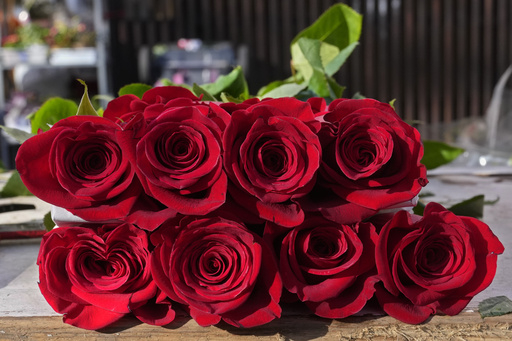
PARIS — This Valentine’s Day, consumers of imported flowers may be unknowingly bringing home more than just colorful blooms and pleasant fragrances. France’s leading consumer advocacy group has issued a warning, highlighting that many imported cut flowers likely come with pesticide residues, including some that are prohibited in Europe.
While the flower industry asserts that studies have shown cut flowers do not pose a health risk to consumers, some advocates argue that insufficient research exists regarding the potential dangers they may pose to florists who handle these products on a daily basis.
UFC-Que Choisir, based in Paris, chose the occasion of Valentine’s Day to disclose findings from tests it conducted on roses, gerberas, and chrysanthemums sold through various outlets, including florists, retail shops, supermarkets, and online stores. Their investigation reportedly detected potentially harmful pesticide residues in every single bouquet tested.
In the Netherlands—responsible for about 60% of the global flower trade—studies have echoed these concerning results.
It is important to note that current regulations in Europe do not set limits on pesticide levels for cut flowers, as they do for consumable produce, according to UFC-Que Choisir. The organization is urging officials to implement maximum residue levels, prohibit the import of flowers treated with pesticides banned in Europe, and require mandatory labeling regarding the origin and treatment of flowers.
In their analysis, the group reported procuring 15 bouquets. Each bouquet contained between seven to 46 different pesticide residues, with an average of nearly 12 identified as hazardous due to potential carcinogenic or endocrine-disrupting properties. Notably, two-thirds of the bouquets tested contained pesticide residues that are prohibited in the EU.
Conversely, Valhor, the French association representing the horticulture, floristry, and landscaping sectors, referenced a German study indicating that cut flower purchases do not pose risks to consumers. In a statement, they affirmed the industry’s commitment to compliance and transparency regarding stringent European regulations governing the usage of plant protection products.
Valhor noted ongoing efforts to promote health and safety in the workplace within the flower industry to minimize exposure, which includes the provision of gloves for workers.
Pesticide expert Pierre Lebailly from the University of Caen expressed concern over the lack of research into the health impacts of pesticides on florists. Among existing studies, one conducted in Belgium indicated that handling contaminated flowers could lead to transdermal absorption of pesticides, potentially harming health.
Furthermore, this issue extends beyond France. The Dutch branch of the Pesticide Action Network, a conglomerate of European NGOs advocating for sustainable pesticide alternatives, tested 13 bouquets, including tulips, roses, and mixed arrangements in a certified laboratory, finding pesticide residues in all samples.
According to PAN, a significant portion of Valentine’s Day rose supplies comes from Dutch growers with facilities in Kenya and Ethiopia. Their study uncovered a total of 71 distinct active substances in the bouquets, 28 of which are banned in the EU, reporting an average of 25 toxic substances per bouquet.

